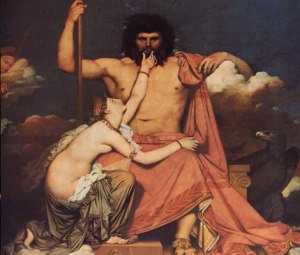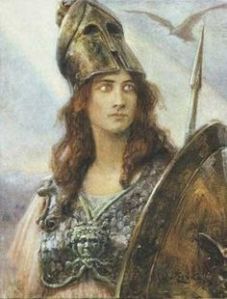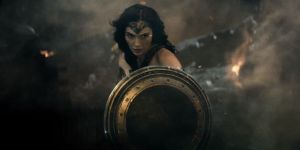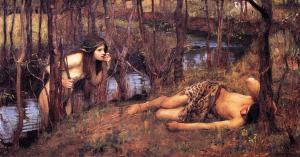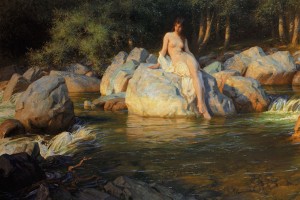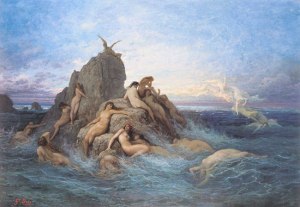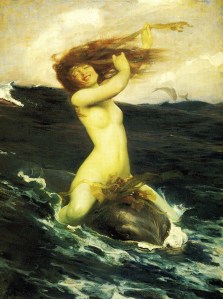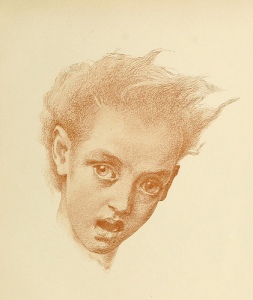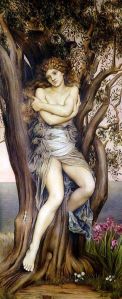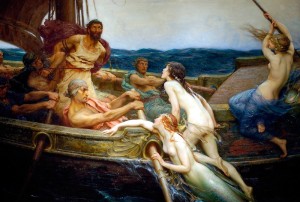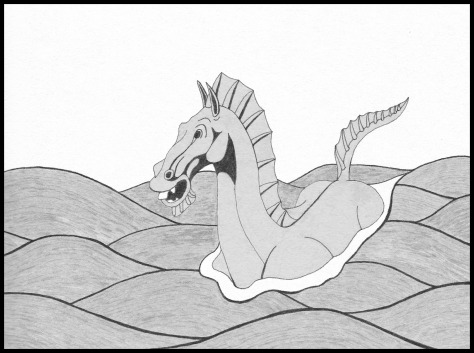
Let us turn now to Celtic mythology (more specifically, Scottish legend) for another mythological creature: the Water Horse. Sometimes considered synonymous with a Kelpie, sometmes considered distinct from it, this entity appears to be part creature and part aquatic spirit.

It is a changeling (shape shifter) that appears in various versions as a woman, a man, a horse, or combinations of these. Whichever version you run across, it is usually a very deceptive and dangerous thing to encounter. In at least one Scottish legend, it lures people into mounting it for a ride, whereupon they become fastened to its back and unable to get off. It then plunges into the water and drowns them. In other accounts, it kills by devouring or crushing its victims. Regardless of the method used, it sometimes does this when it is in human form. This last possibility renders the following painting by Herbert James Draper particularly chilling.

The artistic portrayals I have seen are in three main categories. It can be human (usually female) as seen above. Secondly, it may simply be shown as a horse or a horse in the water. The following picture apparently combines the first two approaches.

Finally, it is sometimes depicted as a hybrid between a horse and a fish or eel of some kind. This is more typical of modern fantasy art. The rather gruesome example below is oddly accentuated by the presence of the heron.
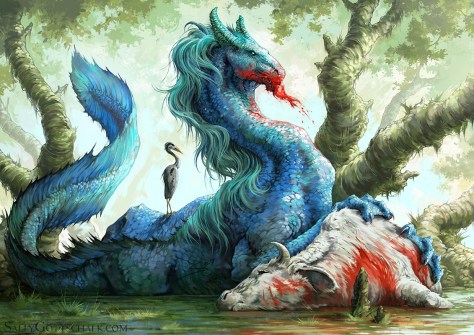
I like the bold, clean lines of this next one. The style is more graphic.
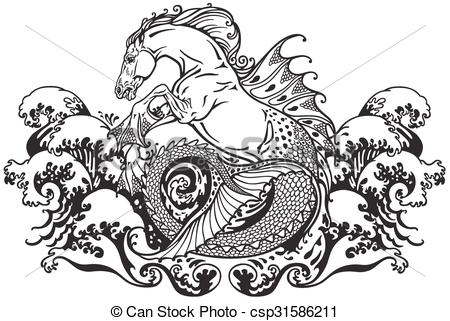
I also like the following blend of Celtic and Greek mythology.

In the picture with which I began this post, I chose the hybrid approach. If you look closely, you can see that I adapted it from Ming Dynasty sculptures of horses. I substituted simple fins for the hair of the mane, chin, and tail. I also extended and pointed the ears. I will end with a profile of the head which I drew to enhance the visual character of this creature for my story.

But wait! There will be another mythical creature next week…


